IROS 2018 presentation
Introduction
Finally, in the big leagues! This year IROS 2018 brought us to Madrid, Spain, to present our work together with around 4000 people from all over the world.
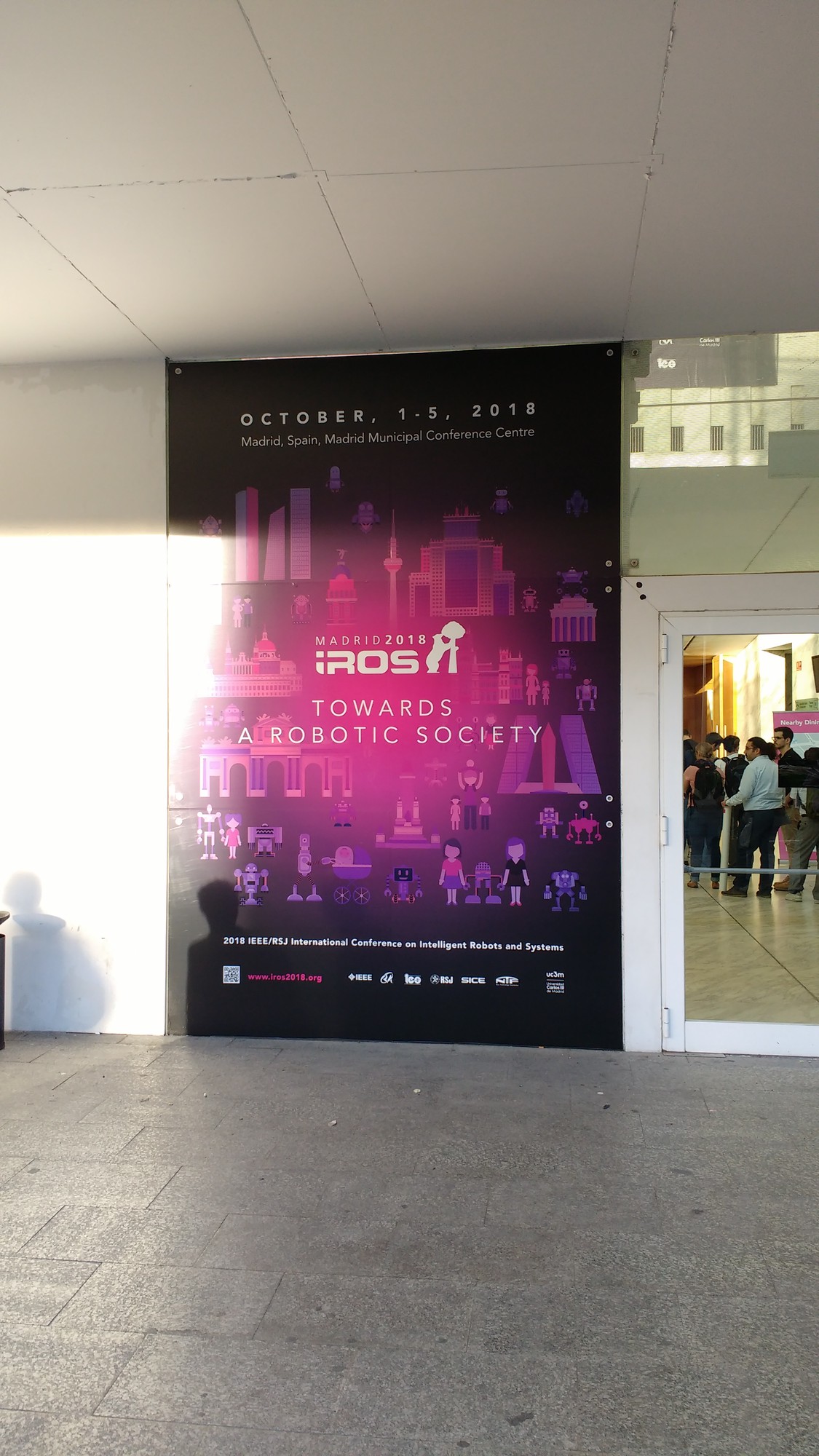
The best and brightest of the industry were gathered for an intense 3 days (5 days including workshops) of technical advances in all the fields of robotics, from design and algorithm evaluation to UAVs and autonomous vehicles. The event was so big, getting inside the venue usually took 30+minutes the first day and more than 2 hours when the King of Spain gave a high spirited speech on Tuesday.
Saying that all the work presented (or at least the ones I got to see around HRI, autonomous vehicles and deep learning) was top in the field would be an understatement.
Highlights of the event would be the keynote speakers, showcasing very exciting work done around the world. A friend said the presentations did not delve in the technical details of their products and publications; this was indeed true, but it was still very exciting and inspiring to see so much good work being done around the globe.

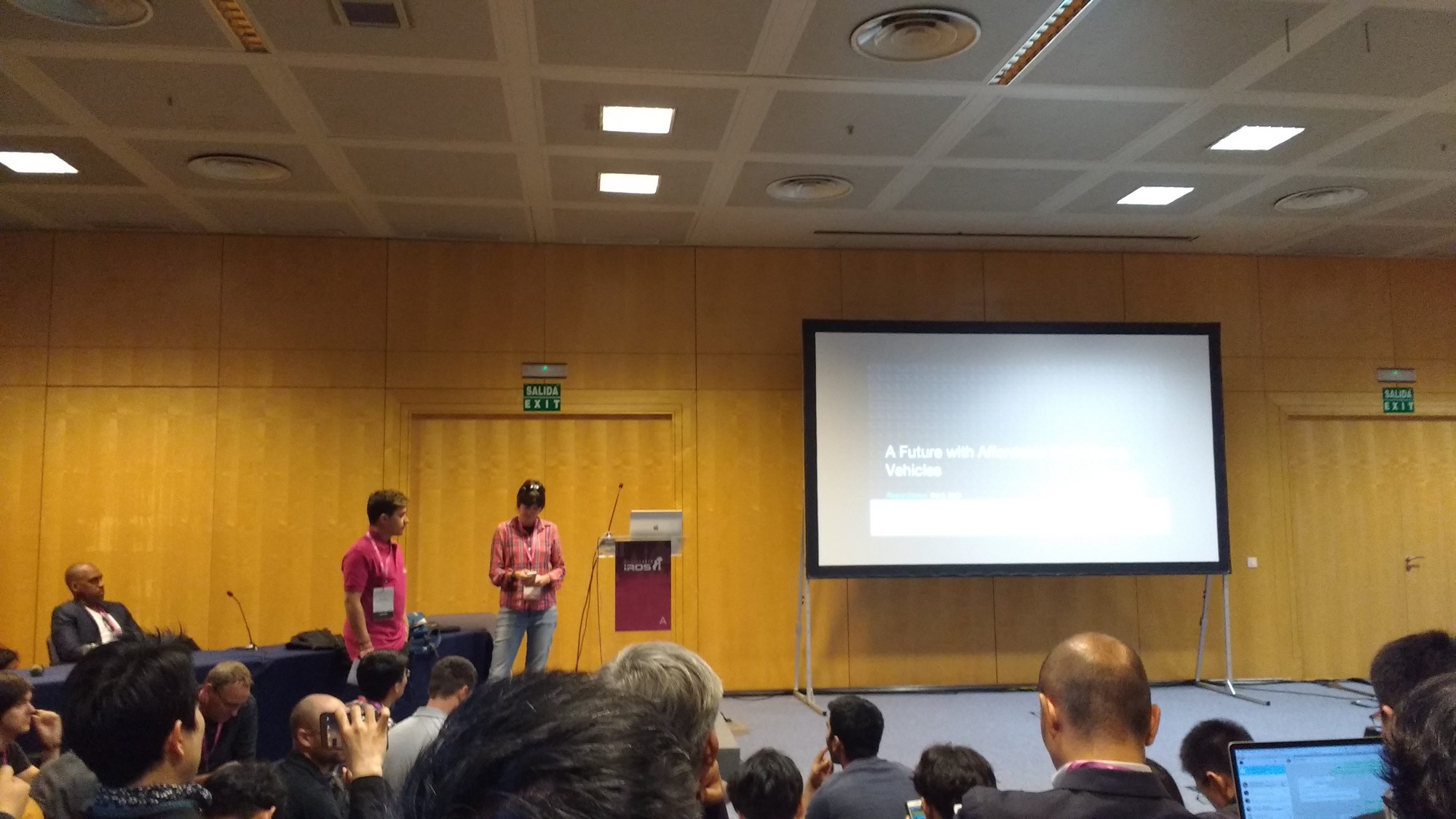
An additional surprise was the evening banquet, held at the WiZink Center for almost 3000 registered. When ranking the countries with the universities that published the most amount of papers, my Ecuador brothers were the highest one in Latin America! Also, competed at different events during the event. And also, my country Colombia beat Mexico in most ranking of most papers published, which was surprise considering all the work done at UNAM and such. Maybe for next iterations, a relation between where the university is, and the researcher’s country of birth could be an interesting statistic to have?
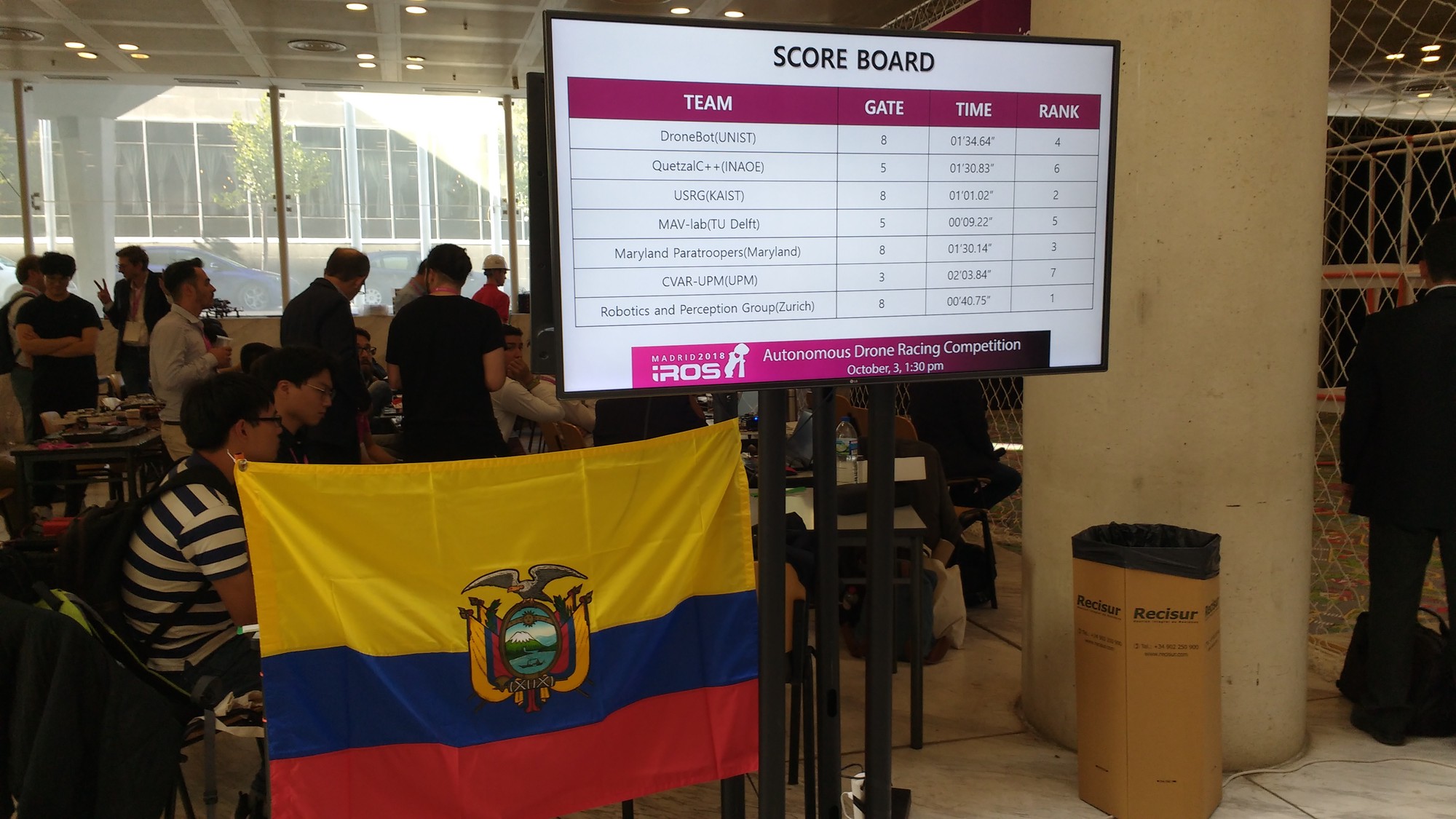
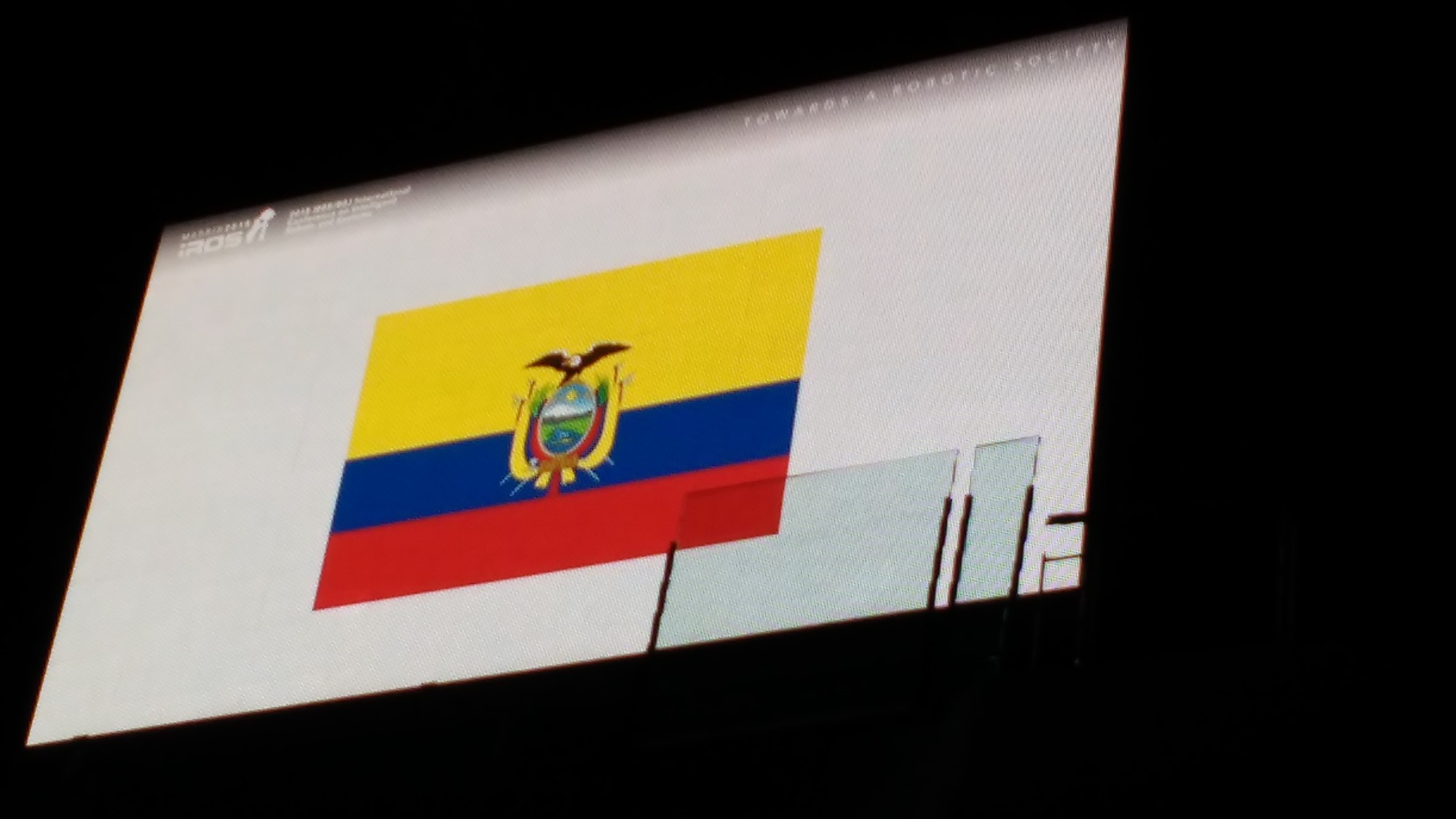
Not considering some logistic problems with catering, registering and such (which are expected for a 4000 people event), the event was an incredibly rich, unique experience that is a must for both academics and industrialist working in robotics.
Hopefully we can make it for IROS 2019, Macau with some interesting work.
Presented Work
I went to IROS 2018 to present my work on driver manoeuvre prediction, which is a continuation from my work presented in TAROS 2017.
The work Drivers’ Manoeuvre Prediction for Safe HRI explores the ideas of human manoeuvre prediction using data-driven techniques.
Presentation
This time, the format of the presentation was a 3 minutes short talk, followed by an interactive session. The format makes sense in a gargantuan event like IROS 2018 was, where more than 5 parallels sessions were being held and ideas must be transmitted in a fast and convenient way.
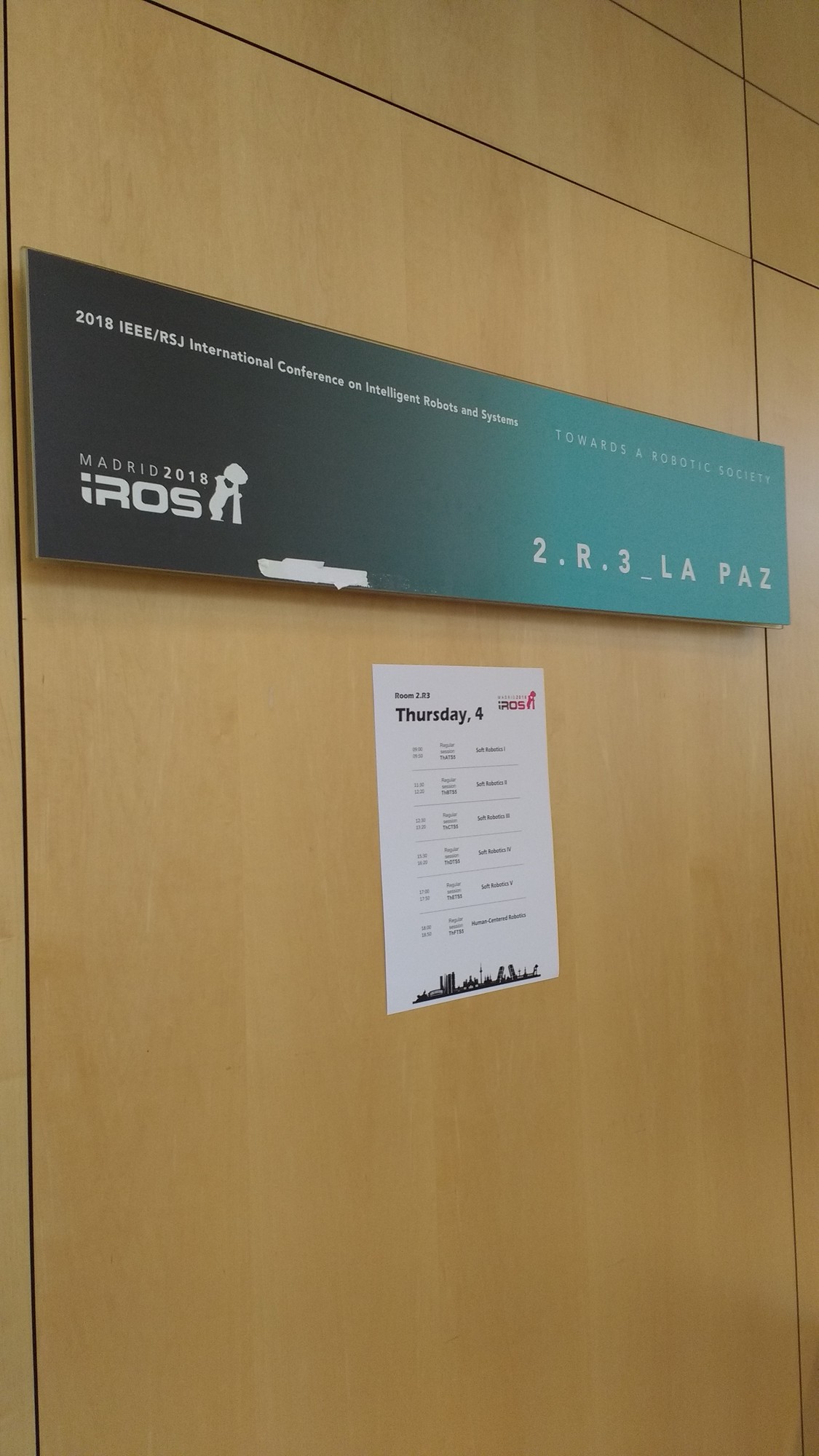
The experience was quite unique. Being the second to last talk of the last session of the last day, I was not expecting many people more than my friends to show up. Luckily, it was well attended, and people got the idea of my work. Maybe some more technical difficulties, details, big words and equations could be shown in order to spike interest from hard-core technical attendees.
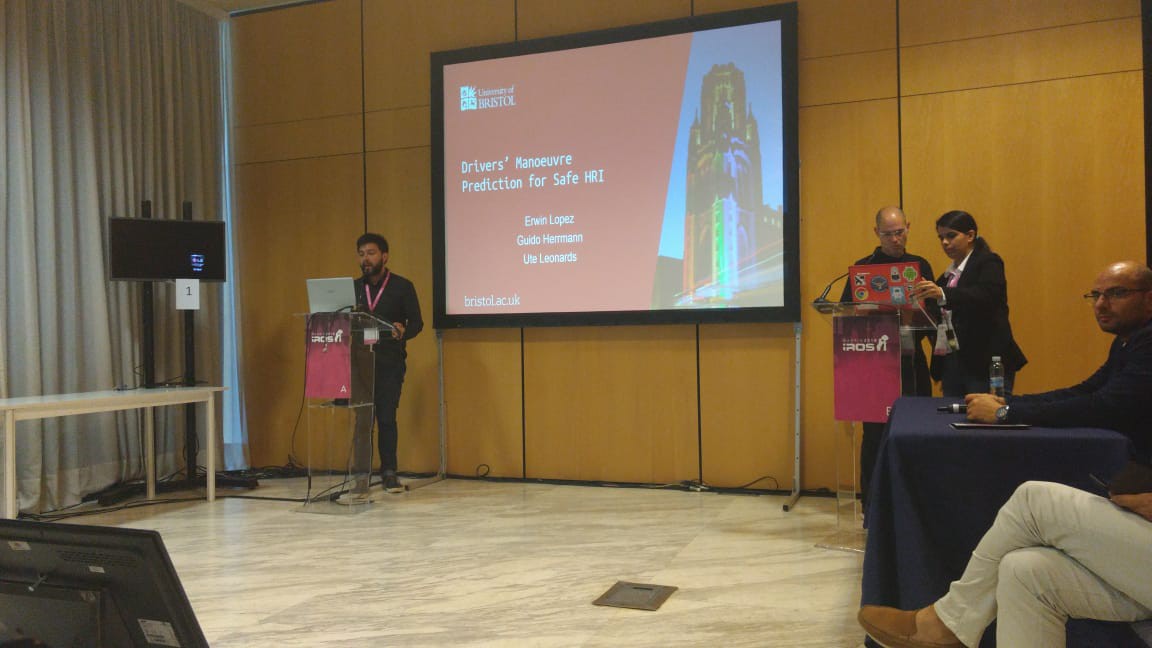
Videos
Dataset
The used dataset can be accessed by the badge:
Published Version
Proceedings are not online yet, but a pre-print can be read from my researchgate here.
Citation
Citation can be obtained from IEEE xplorer directly, but here is a BibTeX entry:
@inproceedings{lopez_pulgarin_drivers_2018,
title = {Drivers’ {Manoeuvre} {Prediction} for {Safe} {HRI}},
abstract = {Machines with high levels of autonomy such as robots and our growing need to interact with them creates challenges to ensure safe operation. The recent interest to create autonomous vehicles through the integration of control and decision-making systems makes such vehicles robots too. We therefore applied estimation and decision-making mechanisms currently investigated for human-robot interaction to humanvehicle interaction. In other words, we define the vehicle as an autonomous agent with which the human driver interacts, and focus on understanding the human intentions and decisionmaking processes. These are then integrated into the robot’s/vehicle’s own control and decision-making system not only to understand human behaviour while it occurs but to predict the next actions. To obtain knowledge about the human’s intentions, this work relies heavily on the use of motion tracking data (i.e. skeletal tracking, body posture) gathered from drivers whilst driving. We use a data-driven approach to both classify current driving manoeuvres and predict future manoeuvres, by using a fixed prediction window and augmenting a standard set of manoeuvres. Results are validated against drivers of different sizes, seat preferences and levels of driving expertise to evaluate the robustness of the methods; precision and recall metrics higher than 95\% for manoeuvre classification and 90\% for manoeuvre prediction with time-windows of up to 1.3 seconds are obtained. The idea of prediction adds a highly novel aspect to human-robot/human-vehicle interaction, allowing for decision and control at a later point.},
language = {en},
author = {Lopez Pulgarin, Erwin Jose and Herrmann, Guido and Leonards, Ute},
month = aug,
year = {2018}
}